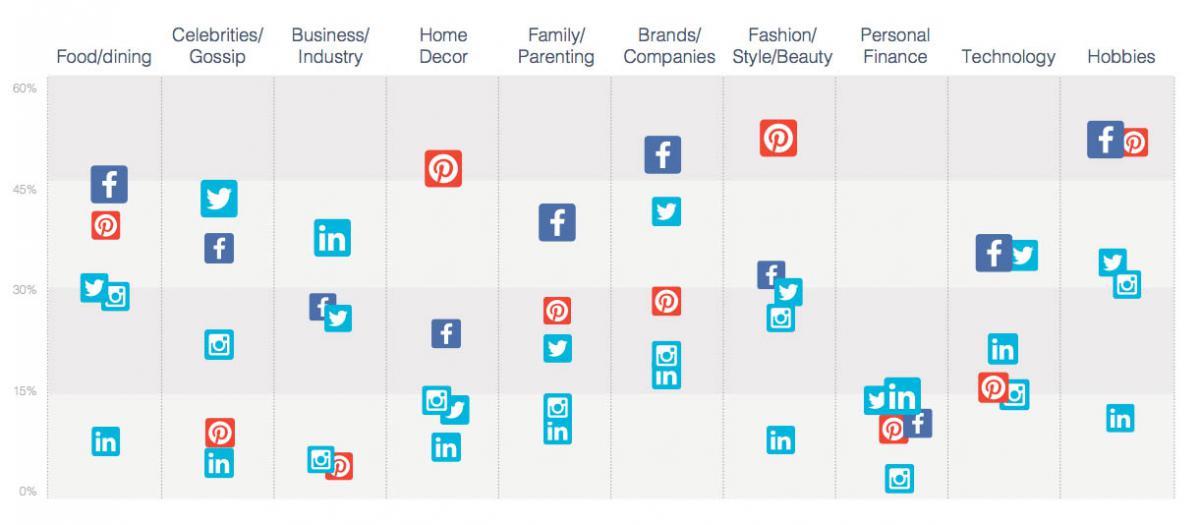Facebook, Twitter, Instagram, Google+, Pinterest, and LinkedIn are just a glimpse of social networks available today. With the popularity social media and mobile devices, the current generations on the internet are the most active and influenced representatives.
Younger people are more susceptible to social media. A research has concluded that marketers would perform better if they can reach these people. Entrepreneurs who plan to use social media should aim to understand social media users as consumers. This effort can be beneficial in persuading them to share positive experiences on social media.
And since social media is one of the places that things can go viral, and power users are the ones that have influence in it, the benefits can be limitless.
And entrepreneurs should try to nudge users from social media platforms onto company websites. This strategy requires not only engaging and thoughtful content but also optimizing website for mobile access.
"With increasing smartphone usage, making a website that is friendly to smartphone users has now become a critical part of website management," said Google.
Different Place, Different Purpose
There are a lot of social media networks available today. Despite most people use at least one, there are many people that use more than enough. The reason is their purpose.
Power users are more likely to own more than three accounts on different social media networks. The likely reason behind this trend is because each and every social media has the advantage others don't. People are spreading themselves, shifting away from a single-purpose social media.
The social giant Facebook acknowledged this. The company that is gives most user experience and features than any social networks, seems to be on a quest to own everything that could conceivably be used for social networking. But in the process, the social giant is breaking up its services to be independent from one another, built as a standalone specialized apps.
For example, Facebook's Paper for News Feeds, and Messenger for messaging. These features are technically part of its flagship service, but the company's aim to decentralization revealed that users aren’t really looking for a single do-everything networking service to encompass their online existence.
"The nature of different platforms makes each suited for connecting with different types of people, engaging with different types of content, and pursuing different interests," explained the study's authors. "People using multiple platforms engage in social hygiene, which means that they are conscious of their activities on each and make intentional decisions to expose different aspects of their identity on different social networks."

The Rising Power Users
Social media power users are the individuals that have both the skills and enthusiasm to optimize social media tools and channels. Marketers that are power users are more likely to won twice the amount of clients through social media, and generate twice as large median of sales that those marketers that are less savvy users.
Power users also are the most likely to say social media has helped them achieve their desired results, and to agree that the people they want to reach are active on social media.
Read: Running a Social Media Competition for Traffic, Awareness and Information
Businesses is slow in adopting social media. This is because most businesses see social networking lacks management support, attitudes about appropriateness, and are not that transparent about the return on time invested to learn something different.
However, power users have overcome these disadvantages to achieve good results. This is because they can win valuable client by:
- Building brand identity.
- Improving effectiveness of referral networks.
- Cultivating specific prospects.
- Enhancing current client relationships.
- Connecting with other financial professionals.
- Cascading thought leadership.
- Expanding professional knowledge.
The difference between power and active users and passive users is that, passive users focus primarily on building brand identity and on improving their referral networks. On the other hand, active users create their own virtual environment where they compile their knowledge by using information to cultivate prospects and enhance business relationships.
Some companies and professionals that are eager to use social media network as an additional to their traditional methods of marketing, need to learn how to use social media within the constraints. Education, training and webinars might be necessary to make them more active.
To help professionals reap the rewards of social business, professional services organizations should engage on three fronts: Modify or loosen policies as much as possible, communicate and provide training, and encourage the creation of meaningful content.